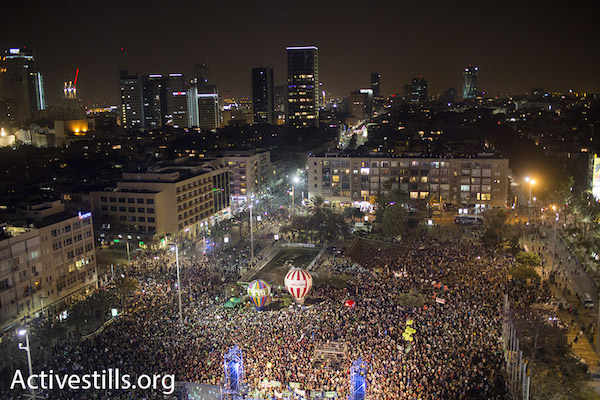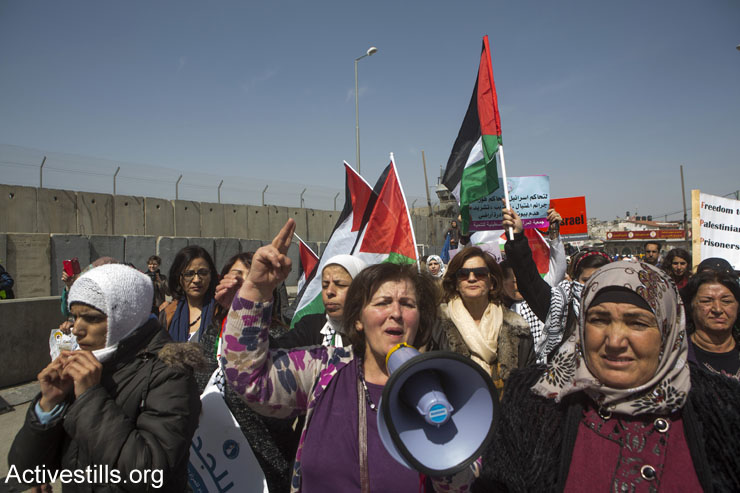Imagine what would happen if tens of thousands of Israelis marched on the Qalandia checkpoint demanding that the occupation end immediately.

Some 50,000 people showed up on Saturday at a rally demanding change: a change in government, a change in attitude toward the Palestinian issue, a change in the state’s approach to social issues.
The main theme in most of the speeches at Saturday night’s rally in Rabin Square was Prime Minister Benjamin Netanyahu’s lack of strategic vision on the Palestinian issue, and the need to reach an agreement to end the occupation and the conflict. Two former senior security officials, ex-Mossad chief Meir Dagan and Maj.-Gen. (ret.) Amiram Levine, both warned that Israel is heading toward a reality of apartheid if it continues its 47-year-old regime of military rule over 4 million Palestinians.
But if those 50,000 people truly wanted change, if they wanted to unequivocally demonstrate that the occupation must end, then they showed up at the wrong rally.
Earlier that day in Jerusalem, some 1,500 Israeli and Palestinian women marched toward both sides of the Qalandia checkpoint — that separates Jerusalem and Ramallah — with more articulate demands for change: an end to the occupation.

Imagine if 50,000 Israelis marched on Qalandia to demand an end to Israel’s undemocratic military rule over Palestinians, an end to the checkpoints that restrict Palestinian freedom of movement while allowing Israelis to drive through unhindered, an end to separate laws and permit regimes that do indeed bring up images of South African apartheid.
Imagine if all of those people who are angry enough about Netanyahu’s lack of vision on the Palestinian issue directed their anger at the occupation itself instead of the leader who administers it, conveniently ignoring that their leader has no vision for ending it either.
Imagine if it became socially acceptable in the Israeli mainstream for Israelis to peacefully march on checkpoints manned by Israeli soldiers, demanding that said checkpoints be dismantled and that full equality be Israeli society’s primary goal. Imagine if that were something society as a whole cared enough about to demand.
That is the brilliance and tragedy of the occupation. While half of Israelis consistently express that they want the occupation to end (in the framework of a two-state solution), only a marginalized few, so-called radical activists, take any action against the occupation itself. Instead, the majority blames its leaders — and blaming Benjamin Netanyahu for not ending the occupation is akin to faulting Silvio Berlusconi for not spearheading election finance reform.
If 50,000 Jewish Israelis marched on the Qalandia checkpoint demanding an end to the occupation even Netanyahu would take note, Herzog would change his messaging overnight, and the seeds of change just might have a chance of sprouting.
Until then, the best possible outcome of an “anyone but Netanyahu” approach is a slightly more palatable, slightly more sustainable occupation — not change.


